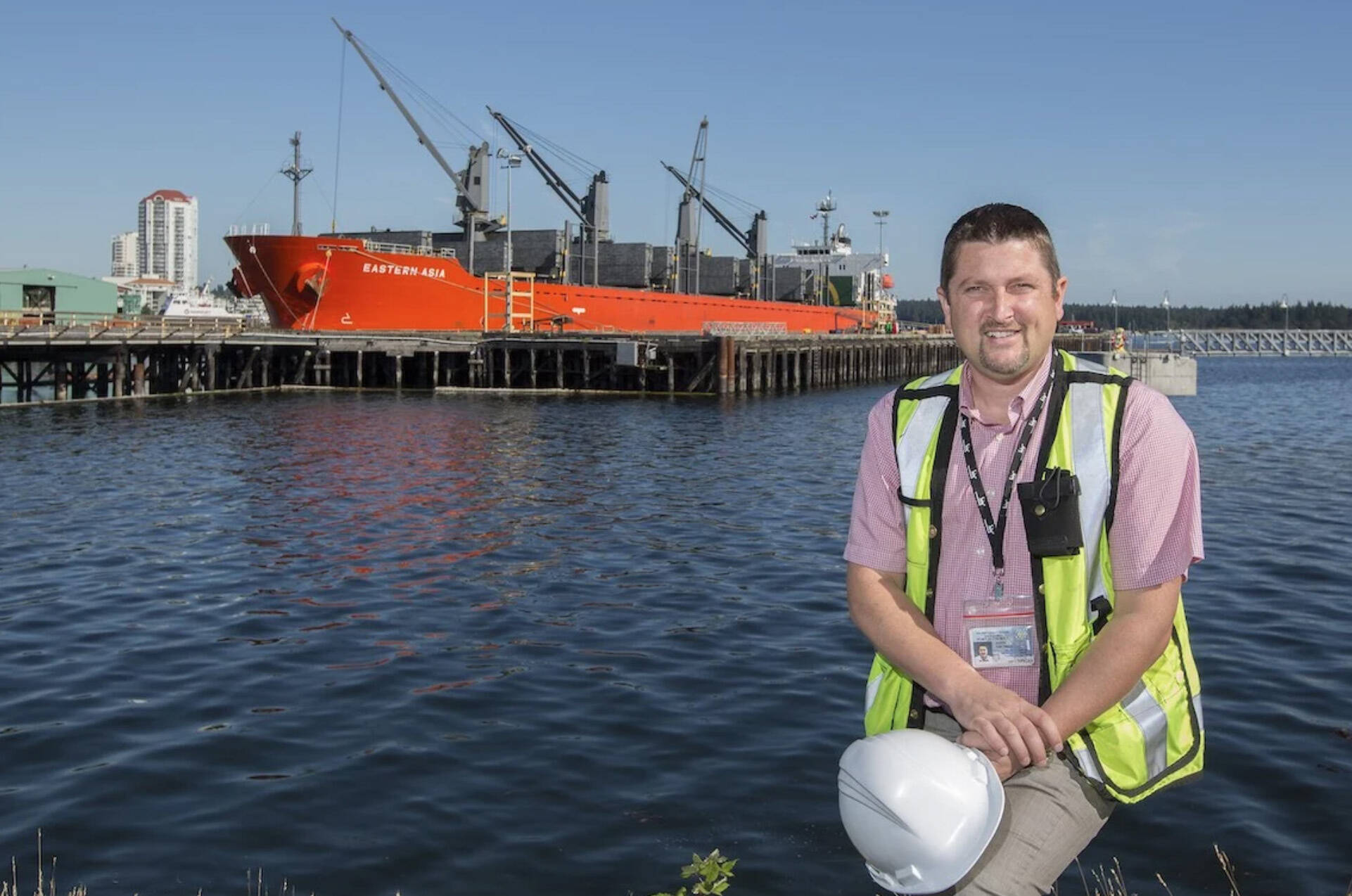By Rochelle Baker, Local Journalism Initiative Reporter CANADA’S NATIONAL OBSERVER
Expanding Nanaimo’s Duke Point Terminal could strengthen Vancouver Island’s vulnerable supply chain and improve the flow of food, fuel and essential goods when climate disasters or other disruptions strike, according to the Nanaimo Port Authority.
The port authority is launching a feasibility study to see whether a large capital investment into the terminal would be sustainable, financially viable and boost the economy and trade while making supply chains locally and nationally more resilient, said Jason Michell, NPA vice-president of business development.
Approximately 16 per cent of B.C.’s population lives on the island, but the region imports 90 per cent of its food from outside the region and warehousing or distribution hubs only stockpile an estimated three days’ worth of food and fuel.
The global disruption to the flow of goods on and off the island during the pandemic and the recent chaos after key road transport routes were cut off by wildfires and floods highlight the need to expand the island’s options, Michell, said.
This summer, western Vancouver Island communities suffered food and fuel shortages and economic losses of upwards of $44 million after the Cameron Bluff wildfire forced the shutdown of Highway 4, a vital central cross-island corridor.
The flooding and subsequent repair of the Malahat corridor on Highway 1 between Victoria and Nanaimo also caused fuel shortages and traffic congestion after severe rains in November 2021 inundated much of B.C.
The best way to be resilient is to have a diversified approach, said Michell, speaking at a transportation panel during a recent Vancouver Island economic summit.
“You need extra transportation methods — trucks, short-sea shipping terminals. You need additional warehousing capacity for industry,” he said.
“We’re trying to expand the terminal’s capacity … and the island’s supplies and its own storage units just in case something strange happens and make it more reliable for people who live here.”
The terminal expansion would significantly lengthen the Duke Point berth from 170 metres to 700 metres as well as double the terminal’s footprint from 30 to 60 acres, Michell said.
The depth of the deep-sea berth would increase to 17.5 metres from 13.5 metres.
The federal government contributed $600,000 to the $1.2-million terminal feasibility study to investigate the supply chain end-to-end as well as goods transport on the island to get an overview of opportunities and challenges, Michell told Canada’s National Observer. It’s hoped the study will be complete by late 2025, he said.
“It’s looking at point of origin to point of delivery because throughout that supply chain, there’s highway systems, rail lines and ferries,” he said.
Given Duke Point’s proximity to the Lower Mainland, the study will also evaluate how the cargo arriving at the terminal could be unloaded, sorted and then shipped by barge short distances to the mainland, and possibly loaded on railcars to lessen supply bottlenecks and congestion at Vancouver ports.
The scope of the feasibility study is still being determined but will also take an initial look at environmental concerns, including the use of sustainable technology and infrastructure, Michell said.
“It will look at greenhouse gas emissions when it comes to building a terminal, and what the marine impacts might be.”
Boosting the use of short-sea shipping to get more goods on and off the island more efficiently could reduce emissions by cutting the reliance on trucks transporting to the island via ferries, he noted.
Michell acknowledged public complaints about the noise, emissions and environmental concerns tied to containerships from Vancouver already being anchored in island waters next to communities are an ongoing concern.
But it’s too early to determine how the expansion might impact anchorages, Michell said.
“Anchorage is a very hot topic,” he said. “But, if we can make cargos more fluid, that could potentially lead to a reduction in anchorages … at times of peak congestion.”
The focus of the study is goods transportation, including the supply chain for food security and commerce, Michell said.
“All of this is really in an effort to try to help support sustainable trade lanes and transportation.”
READ ALSO: Lack of security: why Vancouver Island food production is on the decline
READ ALSO: Transport Canada rejects ban on freighter anchorages off of Vancouver Island
READ ALSO: Cameron Bluffs fire near Port Alberni grows to 208 hectares; Highway 4 remains closed

